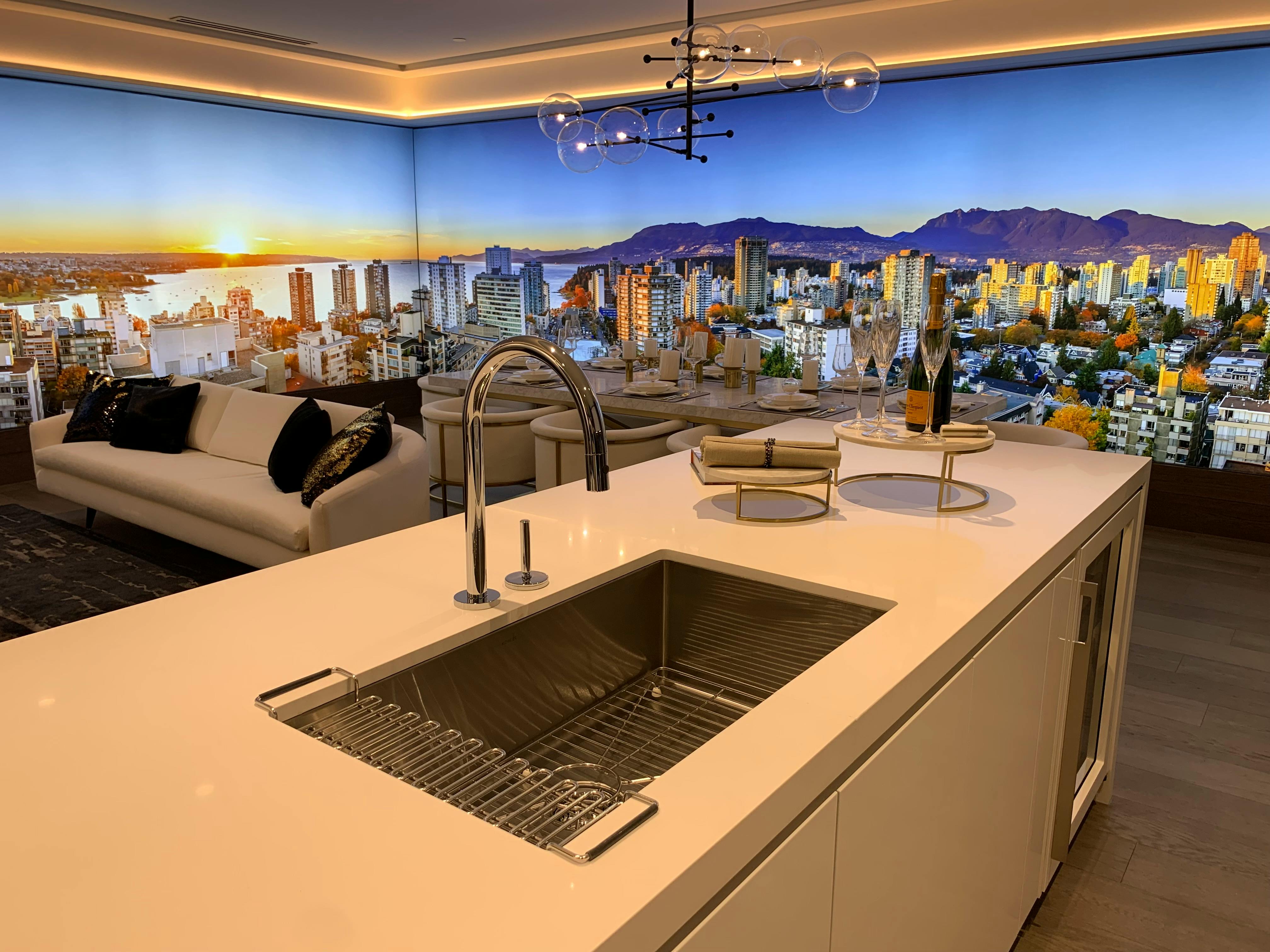Okay, now it’s time to put your merchants (if you’re using any) to work. Who needs to do what, and when?…
Installation – Part 2
Time for the electrician: laying cables for lights and sockets
o Okay, assuming there are only four bare walls where your kitchen used to be, it’s time to have the electrician run the wires for whatever outlets or switches are being installed. There are also likely to be cables running through the ceiling if you’re switching from a single light fixture to multiple bulbs. If you live in a bungalow, the electrician will be able to run them from the loft without disturbing the roof too much. If you live in a two-story house, a certain amount of ‘ripping’ will need to be done to route the cable through the ceiling joists. A lot of people are moving away from heavily Artex-coated ceilings now, so this need not be a problem if you’re going to be plastering the ceiling anyway.
o If your home does not currently have a kitchen control point and your electrician has told you that you need one, now is the time to install the extra heavy cable for this as well. It will come directly from the fuse box/consumer unit in the house, so make sure you have easy access to it.
plumbers and pipes
o Plumbing has become much easier these days with the advent of ‘push-fit’ pipe fittings etc. and simply extending the pipes might be within their capabilities. If your home has a combination boiler installed, this will make isolating hot and cold water much easier, as you can simply shut off the water at the main pipe (often under the kitchen sink) and it will stop the flow to both. .
Now is the time to run the pipes under the floor if you are moving the location of the sink or hob. However, before you begin, the relative positions of these should be marked on the wall or floor so that your pipes end up in the right place.
o However, if you are rerouting your gas lines, this MUST be done by a CORGI qualified installer (most licensed plumbers are).
Plaster
o If you have removed partition walls or installed wiring for ceiling lights and wall switches, then you probably need the services of a plasterer. This is one of those trades that the pros make look so easy, but in reality, it’s quite the opposite! My advice is to get someone else to do it instead of trying it yourself, unless you are dealing with patching small areas. Now is the best time to do this job as it is quite a complicated process and the room will be clear. If your house has central heating, the plaster should dry in 2-3 days, depending on the depth.
tall and tall units first
o Well, your kitchen has been delivered and you are ready to start installing it. Be sure to remove any old fixings, screws or nails from the wall (there is no need to fill in the plug holes at this stage as most will be covered by the units anyway).
o If the units came packaged, you will need to assemble them. Focus on any pantry and wall units first and build these. If you’ve ever built a flat pack wardrobe before, this should be easy enough and once you’ve made one, the rest will be easy.
o If you are installing pantry units or tall appliance cabinets, they will likely dictate the height of your wall units. These are normally placed at the start of a run and are the best place to start anyway. If none is to be installed, most wall units are fixed at around 450-500mm above the worktop height (see below).
Wall units attach slightly differently to base units and typically come with brackets that attach to the wall first. The unit is then hung from brackets and adjusted for height and level from the inside. Installing your wall units first saves you from having to reach over a previously installed base unit, making it much easier on your back!
Base units, then countertops
o Refer to your floor plan and mark on the wall which units go where. Next, mark the height of the worktop (normally 870mm from the floor; include 150mm for the plinth) and use a spirit level to mark a horizontal line on the wall. Using this as your height guide, secure the units to the wall using L-brackets, plugs and screws (usually supplied). Use the adjustable plastic feet to ensure all units are the same height.
Advice: If you have under-trim lighting, it might be an idea to run a pull cord through the back of the appropriate wall units now, otherwise the electrician may have a hard time hooking up the supply (which he probably left at the top of the wall). unit) to the light below.
o If your kitchen layout is a straight line or galley layout, countertop installation shouldn’t be too difficult, there are no joints to make. However, if you have an L-shaped or U-shaped kitchen, a professional installer could create a nearly invisible joint using a special template and high-power router. Tools you are unlikely to have. An economical and simple option is to use aluminum strips for worktop joints. You will have to decide which one you prefer according to the look you are looking for and your budget.
The cutouts for the sink and hob should be within your means though, just make sure you make them with the countertop attached to the base units (otherwise it will probably break when you lift it into place). Always use the template to mark the cut if one was supplied with the sink/plate. Otherwise, make sure you don’t place the sink upside down on the countertop and mark around it, otherwise it will fall straight through the hole. I’ve seen it done 🙁
Plumber for sink, faucet, dishwasher, washing machine and ceramic hob
o After the plumber’s ‘first install’, you should arrange for him to return at this stage to finish hooking up the faucet, washing machine and dishwasher (if installed). It will also connect the hob if it is gas and check for leaks. If you previously had an external faucet or want to install one, now is a good time to ask.
We’re in the home stretch now – last day of installation tomorrow.




